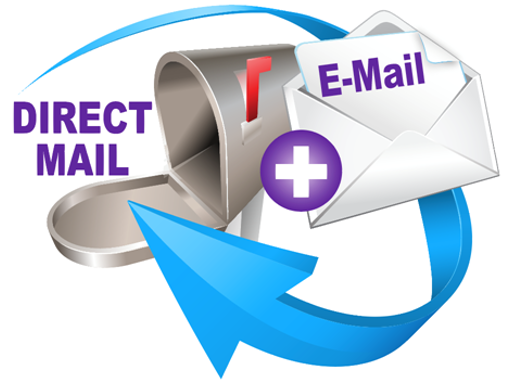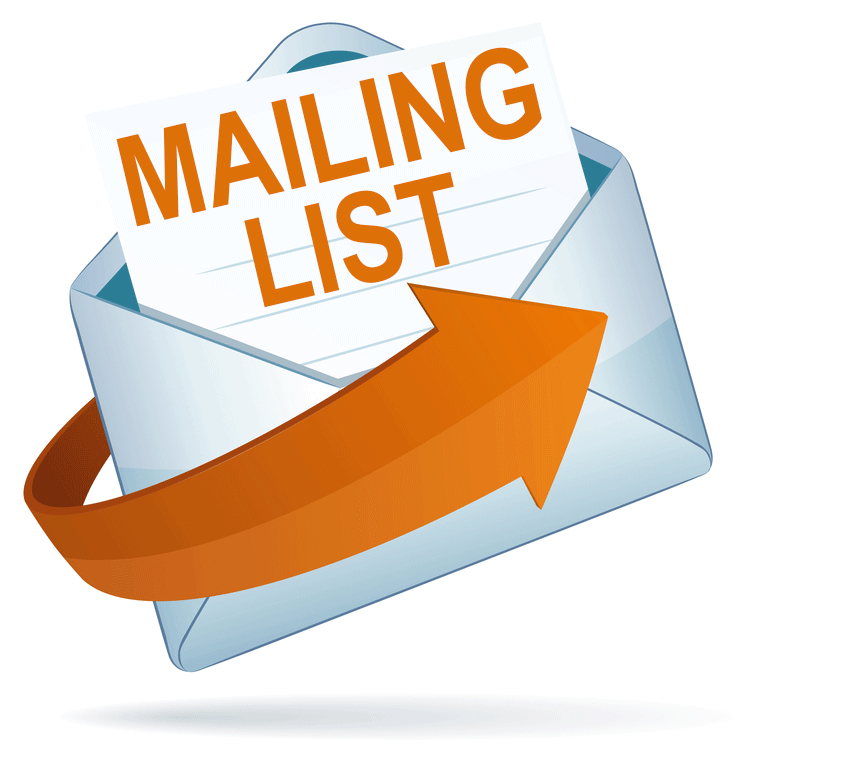 Sorry to mention the “C” word whilst still in November, but with more than half of annual retail sales occurring during the three months leading up to Christmas in the UK, and a large proportion of these happening between Black Friday and Boxing Day, the festive season can quite literally make or break brands. To make sure the festive season goes with a bang, some brands are spending more and more on big, flashy Christmas TV ads and campaigns to reach shoppers in the run-up to the big day, however not every brand has the budget required to take part in what many now refer to as the 'Super Bowl' of British Advertising. But fear not! As with Christmas presents what counts is not what you spend but the thought that goes into it making your gift, or marketing campaign, really relevant and personal. So, with so much at stake, and just a few months until the big day, what steps can marketers take now to ensure that their brand is at the top of the wish list this Christmas? CREATE EMOTIVE CONTENT To cut through all the noise, marketing campaigns need to spark conversations that are evergreen in quality and continue growing and developing long after seeding - and the best way to do that is by using emotion. John Lewis' Man on the Moon and Sainsbury's Mog TV commercials provide great examples of how to capitalise on human emotion. The first focuses on the less publicised side of loneliness experienced by many at Christmas, and the latter applies humour to unexpected, catastrophic events, whilst both also integrate the relatable 'time for sharing' theme to deliver a heartfelt message. Although each campaign was entertaining and successful in gaining many millions of media impressions, it is less clear whether they encourage the buyer to make a purchase, choose one brand over another or simply leave viewers with warm and fuzzy feelings. Without spending £7 million, there are many other ways for brands to get their products onto Santa's sleigh at a fraction of the cost. OUTSMART THE COMPETITION WITH A CLEVER AND CREATIVE SEO STRATEGY With online shopping now accounting for 27% of the UK's entire retail market, a solid strategy for SEO is crucial for helping the search engine spiders to recommend and index your website. Marketers should ensure that online content revolves around providing answers to trending queries rather than simply telling the audience what you want them to hear. Smart content uses your assets, is entrenched in research, will contain useful information and be ahead of the curve. And importantly, it will help to drive traffic to your website and grow conversions. MAKE SURE YOU'RE MOBILE FRIENDLY Search engines rank websites based on their inherent authority, for example, are your pages being linked to by third party sources, as well as components that communicate positive attributes like the website's speed, efficiency and general user experience. They also look at how mobile friendly your website is. Today, some 39% of people use smartphones as the primary mode of research for products and services (up from 19% in 2013), and purchases made using mobile devices are predicted to reach $1.915 trillion worldwide. With that in mind, it's important to make sure you are offering mobile users a great experience on your website, while also considering mobile users carefully when planning your ads. For instance, it is well worth adding geo-targeting to the mix to not only enable you to serve real time ads to nearby, potential customers but it also provides you with meaningful and identifiable insights on what people want, need and are interested in during the festive season. SHOW OFF YOUR PRODUCTS EFFECTIVELY ONLINE Product Listing Ads (PLA's) are continuing to go from strength to strength. Cost Per Clicks (CPC's) remain low, yet conversion rates and average order values are almost as high as pure brand, and the ROI is excellent. So how do you make the most out of PLA's at the most important time of the year? Marketers will need to ensure all of their products are in the feed, named and include prices. Each product should have its own line and all text and images need to be 'crawlable' so the links can be discovered and indexed. Your feed will have to be updated daily and product titles must be 70 characters or less and in this instance, the description lines must include relevant keywords. BE SMART ABOUT HOW YOU TARGET SHOPPERS ON SOCIAL Social Media is constantly evolving which is making it more useful and relevant to marketers, but also more difficult for brands to use to their advantage. Having millions of followers does not necessarily mean engagement. At a time of the year where brands should be trying to reach the right customers with the right message, it is vital to properly know and understand them. 55% of all FTSE companies' followers on Twitter appear to be fake or inactive which means that content often isn't even reaching 'real' users. Marketers need to dig deep when finding out where their target audience is spending time online and take advantage of data driven tools and proven advertising platforms to obtain results based on tangible business objectives and not just brand awareness, likes and shares. With the average household spending approximately £800 on Christmas shopping, including gifts, food and drinks, marketers need to plan early, set clear objectives and ensure all channels are working together simultaneously. And in most cases, they won't need to spend £7m on a TV ad.
0 Comments
 Direct mail and email can be very effective ways of marketing your business, allowing you to reach large numbers of customers at low cost. Email offers immediacy and low cost, while well-designed direct mail can really stand out. Whether you are using direct mail or email, you need to be sure you are contacting the right people with the right message. Monitoring responses allows you to track effectiveness and improve future mailings. 1. Is it for you? Establish who your target audience is
Decide what you want to achieve with existing customers For example:
Decide what you want to achieve with new prospects For example:
Identify what the costs would be
Assess likely response rates
Decide whether mailing is the right option
2. Your own mailing list The quality of your database is the most critical element in achieving a good response rate. It pays to create your own list
If you plan a significant volume of mailings, use database or CRM software
Your database is a valuable business asset and must be managed
3. External mailing lists If you want to reach out to a larger slice of the market, renting a mailing list is usually the most cost-effective method. Many lists can be rented or bought in
Identify your needs, in writing
Shop around until you find the right list at the right price
Check the quality of the list
Negotiate a deal
Do not re-use a list you have rented for one-off use
YOUR LEGAL RESPONSIBILITIES You must comply with the Data Protection Act
You must not send unsolicited email to individuals
You should not send direct mail to individuals who do not want it
Always allow individuals and businesses to opt-out from future mailings or email
4. The mailing A well-produced mailing will create a better response rate. Quality is important - you are competing with all the other mail and email that is sent to your target groups. Choose the right timing
Create a compelling mailing
Plan your follow up
5. Testing and monitoring A great advantage of direct mail is the ability to test a range of possibilities quickly and simply. Split test different mailings
Test different offers
Test different sectors of the market
Try different timings
Experiment to find out what works
6. Using a mailing house A small business can easily handle mailings of up to 1,000 items
Find potential suppliers
Shop around for quotes
Check that the mailing house does a good job
 Your mailing list is one of your most valuable marketing resources. It holds information on your customers and prospects that can be used to improve customer satisfaction and increase sales. An up-to-date marketing database is a goldmine of useful information. It can help you run your business more effectively, providing a snapshot of your most profitable clients and highlighting sales trends. Building a mailing list Before you begin to create a database, you need to think about the information you want to hold on each contact. Basic customer details - address, email, telephone and fax numbers - are just a starting point. Details about buying habits will enable you to better understand your customers and meet their needs. You can also collect lifestyle information such as gender, age and income so you can target your marketing messages at specific demographic groups. Your contact list can be compiled from a number of sources. Start with your existing customers and contacts. You can then find new prospects in your area by looking in the electoral register. For business prospects, you can refer to the membership lists of industry bodies or local Chambers of Commerce. You can also consult directories. Copying and mailing a whole list, however, is a breach of copyright. Renting or buying a mailing list is a good way to reach a new customer base. List rental usually costs about £120 per 1,000 mailing names - but bear in mind lists of consumers tend to be cheaper than lists of business contacts. When you shop around for the best mailing list, you can ask for high spenders or other groups based on social type, location or job title. Keeping your database clean Keeping your mailing list clean is an important job. A good direct marketing contact list should have accurate, up-to-date and relevant data. It's vital to clean your list regularly by removing or amending incorrect data (for example, when mailings arrive 'returned to sender') and getting rid of duplicate entries. You will quickly alienate your contacts if you send them mailings that are wrongly addressed or irrelevant to them. The law gives individuals the right to stop their personal information being used for direct marketing. A request in writing must be honoured within 28 days. Individuals can also ask to see any personal information you hold about them to check if it is correct. You can improve the accuracy of your marketing database by checking it against the Royal Mail's Postcode Address File (PAF). This service checks spelling and accuracy of addresses and postcodes and corrects them in your mailing list. Finally, make sure you do regular checks against the Mailing Preference Service (MPS) list, the Telephone Preference List (TPS) and the Fax Preference Service (FPS). These services are for consumers who want to opt out of receiving unsolicited mail, calls or faxes. Using your database to improve profitability Your database can reveal your customers' buying behaviour, including the type and frequency of orders. It can highlight trend and patterns. It can even help you target your perfect customer. This is valuable market intelligence. By analysing your own data, you can make more informed decisions about everything from product development to pricing. Take that perfect customer profile, and you can find new prospects that match it and target them. Your mailing list also enables you to improve customer service and build better relationships with customers. By understanding your customers better, you can give them what they want. Your guide to buying mailing lists Buying a mailing list can be fraught with pitfalls, so here are my eight valuable pieces of advice to help you source the right mailing list 1. Don't delegate: I receive many enquiries from receptionists, apprentices or others who are not qualified to source marketing data. At the very least, the person sourcing the list should have an in-depth understanding of your marketing campaign objectives and target audiences. In our experience, delegation of data purchasing usually ends up with decisions being made on price only. If you want to go down this route, you can just buy a cheap list from eBay and throw the budget and potentially your good reputation down the drain. Even the business owner may not have much expertise in the nuances of marketing data. The safest route is to get expert impartial advice before you speak to data sales reps. 2. Don't believe the hype: All data list owners will tell you that their data is the best and that it is unique in the marketplace. The truth is it is all just hot air. When you speak to a mailing list company, you don't speak to the data experts, you speak to a sales person paid to tell you good things about their data. So take what the sales person says with a pinch of salt and ask the right questions so you can compare the different lists that are available. 3. Don't ask silly questions: How good is your data? You might think this is a good question, and certainly it's one many people ask, but what answer are you expecting back? I guarantee that all responders will give you a pre-prepared spiel that again leaves you with no tangible information about choosing a suitable list. Questions to ask should cover guarantees, legalities and data suppressions, opt-in mechanisms and sources, samples, duplicate prevention and more. A good broker will ask these questions for you. 4. Don't believe that all data is equal: Would you buy a "genuine article" Rolex off a man in the pub for a tenner and expect it to be real? No, you wouldn't. But some small business owners do believe the hype from data sales people and then they wonder why their mail server is shut off, why they have complaints about spam and why the data owner is slow to return their complaint call. 5. Don't buy from people who are not experienced: I have seen many companies appearing recently claiming to be data experts. It's vital to work with companies that have good data credentials so that you get lists that comply with legal and ethical marketing standards. 6. Don't jump in with both feet: As a rule of thumb, data sales people prefer you to buy large amounts of data and therefore spend more money with them. They frequently come up with silly offers to tempt you into giving them a large chunk of their monthly sales target. Then these offers come your way, take stock and work out whether it is actually worth your while to buy big chunks of untested data. As a rule of thumb, test first to validate the list before buying large volumes. And if it's too good an offer to be true, walk away. 7. But don't take the samples as gospel: If you have ever purchased a duff list after receiving a good sample, think about these questions before buying your next list: Do you think data companies realise the importance of good samples pre-sale? Do you think data companies have ever considered cleansing a sample before release? 8. Give data procurement the importance it deserves: Do your research. Adhere to direct marketing laws. Think of the ethics and brand implications of using poor quality and/or illegal marketing data. Buy from Direct Marketing Association (DMA) members only. And most importantly, speak to data experts. After all, would you fix your own car?  Testimonials are an extremely important part of the success of your business. On your relationship-building journey, which is lined with credibility and expertise, testimonials from loyal customers are a critical part of the presence of your business. What is a testimonial? Testimonials are written or recorded statements that support your credibility and level of expertise. They also strengthen your reputation by expressing the trust that other people have in you and your business offerings. They are a wonderful tool that helps you to attract a deeper interest from perspective clients and existing clients and will ultimately make you and your business increasingly more successful. Simply claiming to be "the best" is not enough to convince people to try your products or services. Testimonials offer an independent indication that you have done a good job and can help reassure new or nervous buyers, as well as distinguishing you from your competitors. Here are ten easy steps to generate customer testimonials:
Conclusion Credibility is essential to the success of your business. Strategic and intelligent use of testimonials can go a long way in promoting your business. The more online visibility and stronger reputation you have and continue to maintain, the stronger your business will become. |
AuthorLisa Hunter is an experienced Marketing, Events and Project Manager. She has over 10 years’ experience working in the IT and marketing industry, delivering strategic marketing support and managing creative projects for a wide-range of clients. In this blog she shares her knowledge and experiences…we hope you enjoy it. Archives
June 2019
Categories
All
|
 RSS Feed
RSS Feed